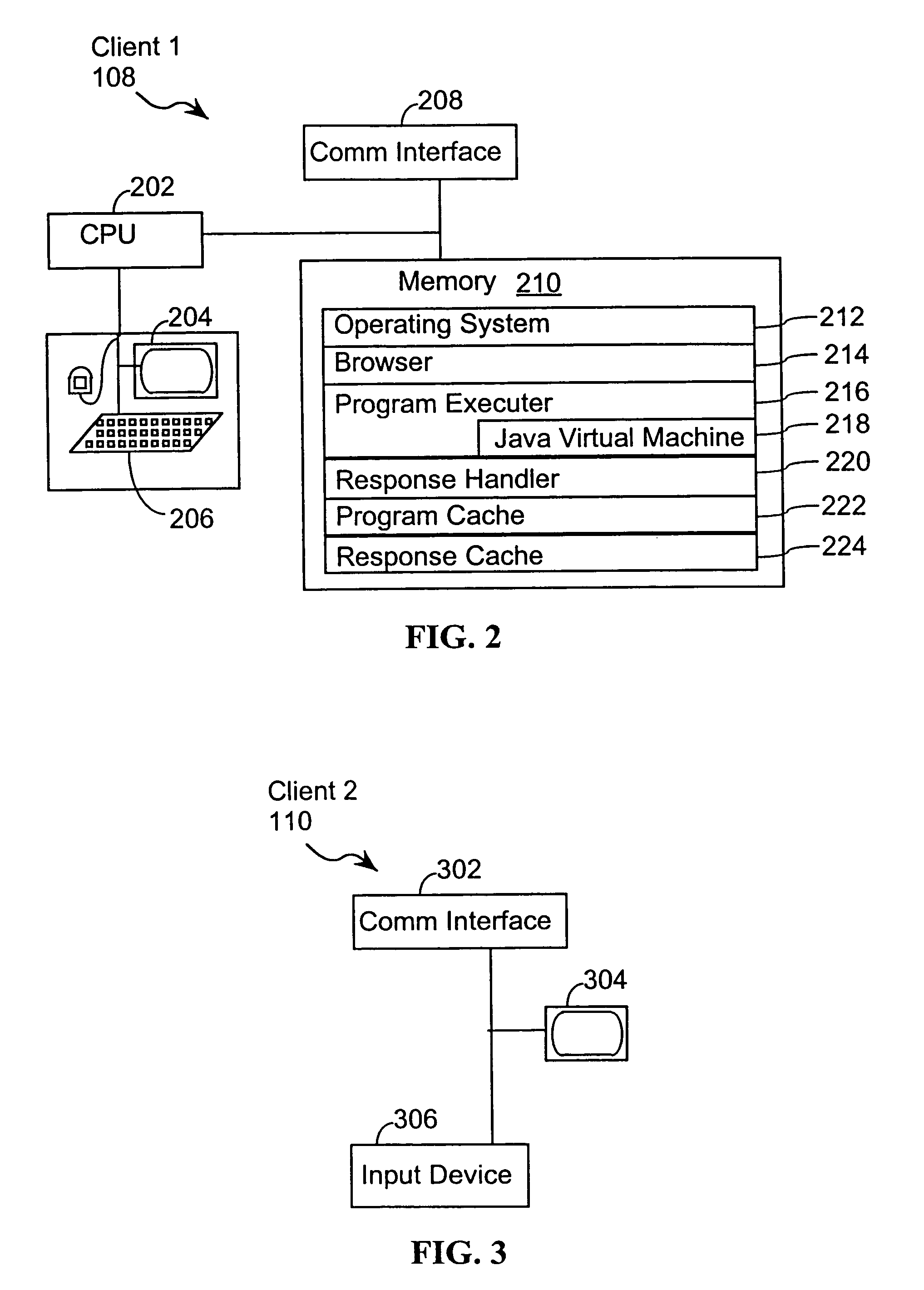Explicit server control of transcoding representation conversion at a proxy or client location
a transcoding representation and proxy server technology, applied in the field of system networks, can solve the problems of data degradation, page conversion procedures may be inadequate for conversion of some responses, and the size of the representation may decrease, so as to minimize future retrieval time, improve efficiency, and minimize overhead
- Summary
- Abstract
- Description
- Claims
- Application Information
AI Technical Summary
Benefits of technology
Problems solved by technology
Method used
Image
Examples
Embodiment Construction
[0034]FIG. 1 is a network system 100 in accordance with an embodiment of the present invention. The system 100 includes an origin server 102, another server 104, a client 108, another client 110, a proxy server 112, and a communications network 106. The servers 102-104, clients 108-110 and the proxy server 112 are connected to each other through the communications network 106. In a preferred embodiment, the communications network 106 is the Internet. The origin server 102 includes one or more central processing units (CPU's) 114, a communication interface 116, which provides the interface between the origin server 102 and the communication network 106, and a memory 118. The memory 118 includes:[0035]an operating system 120;[0036]server applications 122;[0037]a request handler 124 for handling client requests;[0038]a response generator 126 for generating responses to client requests;[0039]a program selector 128 for selecting programs to be specified in responses; and content files 13...
PUM
 Login to View More
Login to View More Abstract
Description
Claims
Application Information
 Login to View More
Login to View More - R&D
- Intellectual Property
- Life Sciences
- Materials
- Tech Scout
- Unparalleled Data Quality
- Higher Quality Content
- 60% Fewer Hallucinations
Browse by: Latest US Patents, China's latest patents, Technical Efficacy Thesaurus, Application Domain, Technology Topic, Popular Technical Reports.
© 2025 PatSnap. All rights reserved.Legal|Privacy policy|Modern Slavery Act Transparency Statement|Sitemap|About US| Contact US: help@patsnap.com



